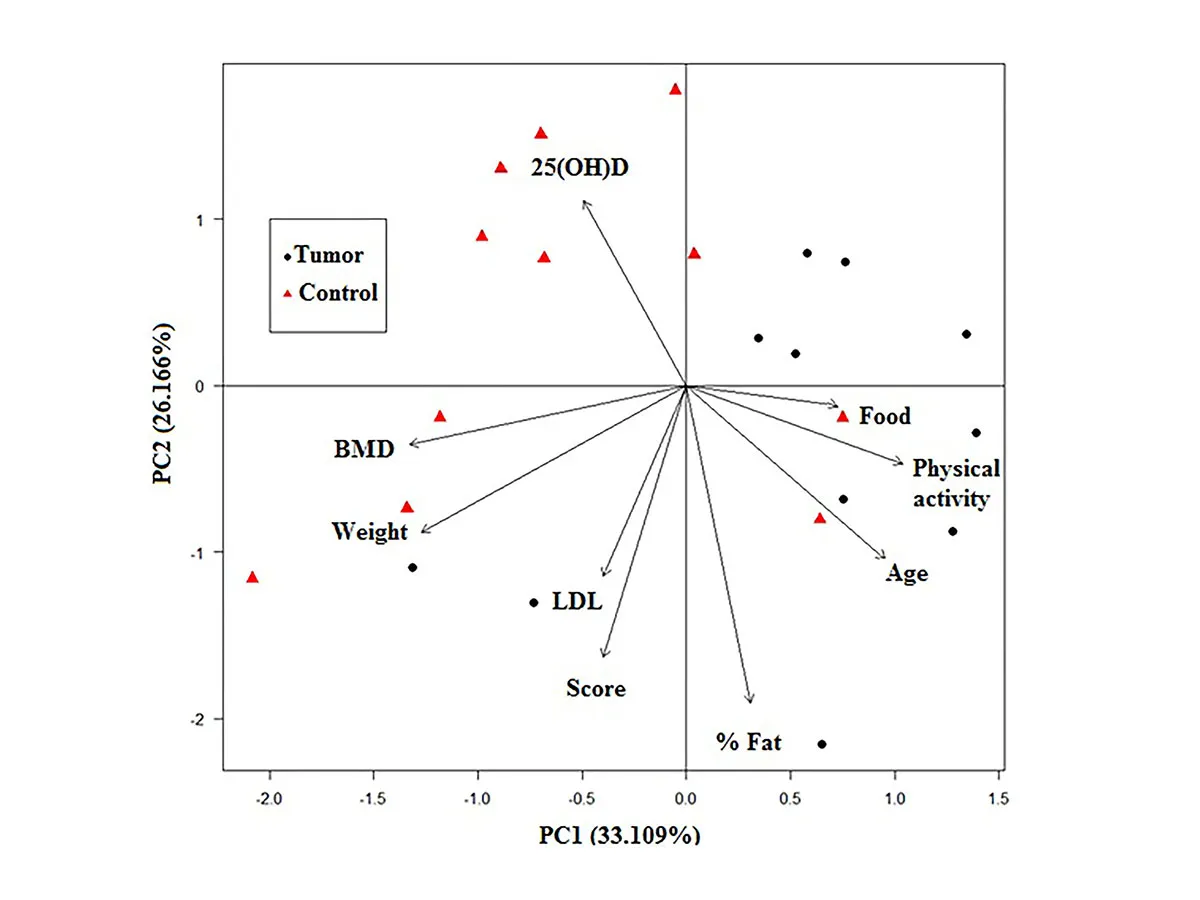Association between vitamin D and malignant mammary tumors in obese female dogs
DOI:
https://doi.org/10.24070/bjvp.1983-0246.v15i1p20-30Keywords:
female dogs, hypovitaminosis D, body fat, mammary carcinomasAbstract
Overweight and obesity are known risk factors that are involved in the development and aggressiveness of breast tumors in women. In situations of obesity, local and systemic inflammation may worsen the prognosis of oncological patients. Moreover, hypovitaminosis D increases the risk of breast tumors in women. In female dogs, low vitamin D levels have been found in cases of lymphoma, osteosarcoma and mast cell tumor. The present study aimed to make correlations between body fat composition and serum 25(OH)D concentration in female dogs with mammary tumors. Two experimental groups were formed: healthy female dogs (n = 12; control group) and female dogs with mammary tumors (n = 11). An analysis on body composition was performed using dual-energy X-ray absorptiometry (DXA) equipment. In the tumor group, multicentric nodules were most prevalent (63,6%), with diameters of up to 8.2 cm. The most frequent histopathological diagnosis was tubular carcinoma (45.5%), and 9.1% presented metastases in axillary lymph nodes. The mean 25(OH)D concentration in the female dogs with mammary tumors (37.6 ng mL-1) was lower than the level in the control group (65.4 ng mL-1). Multivariate statistical analysis showed that elderly female dogs with malignant mammary tumors and high body fat levels presented lower 25(OH)D concentrations than those of the control group. It was concluded that female dogs with higher body adiposity presented mammary tumors of higher aggressivity, and that the higher the fat percentage was in the female dogs with malignant mammary tumors, the lower their vitamin D concentration was.


